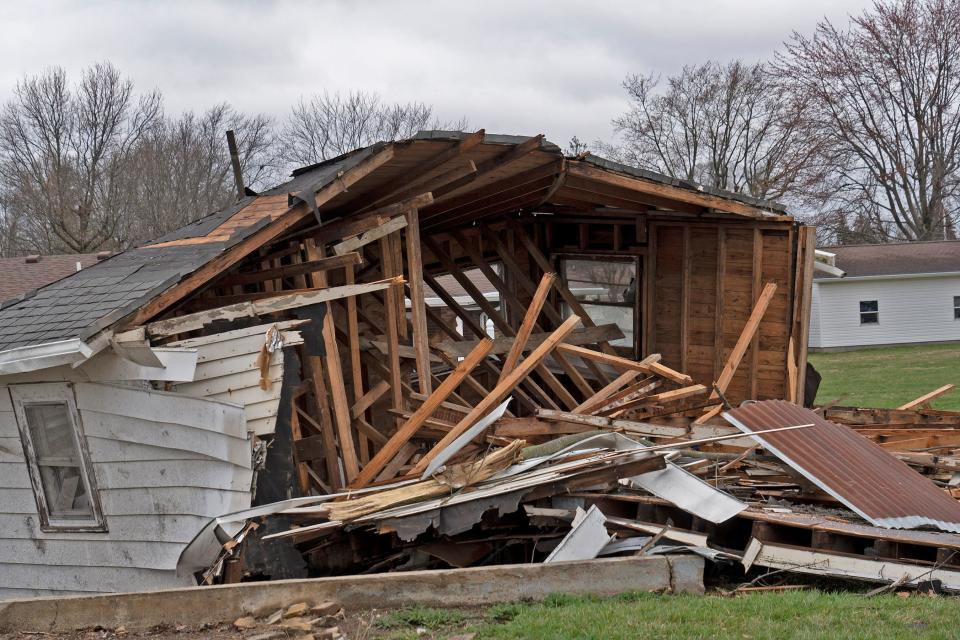Was it a tornado? Here's how the National Weather Service investigates storm damage
Tornadoes are some of nature's most violent storms. When severe weather after a thunderstorm leaves widespread destruction in a community, we often think the damage was caused by a tornado — but that's not always the case.
While tornadoes can flatten homes and level trees, so too can microbursts, which are storms that can tear through an area with 100 mph winds.
An EF-3 tornado caused widespread destruction in the East Central Indiana community of Winchester — uprooting trees, flattening homes and injuring dozens of people Thursday, according to the National Weather Service, which confirmed the tornado Friday afternoon.
The National Weather Service is tasked with figuring out if damage after a bad storm was caused by a microburst or a tornado. Here's what NWS storm survey teams do and why the process can sometimes take hours, even when social media is awash with videos of funnel clouds.
Why does it take time for NWS to identify a tornado?
Meteorologists have a lot of work to do after severe weather, which takes time. Trained spotters first help NWS gather information during and after storms. These spotters report information to meteorologists, who examine radar data and other videos or photos sent to the NWS.
Next, storm survey teams drive to where the damage occurred. Once there, according to NWS, they walk along the entire damage path, speak with emergency officials on scene and collect important storm data.

Tornadoes in Indiana: What we know about damage in Winchester, Selma and Madison
The information can include photos, GPS locations, and statements from witness and survivors. Next, the survey team has to drive back to the office and analyze the data, as well as consult with other experts if needed before releasing their official findings.
It's not the amount of damage that determines if a tornado occurred, says NWS, it's about what the damage looks like.
We've got a team out surveying damage from yesterday's storm that impacted Selma and Winchester. Take a look at what all goes into a storm survey and why it may take a while to determine the EF rating of a tornado. We will release results once conclusions are finalized. #INwx pic.twitter.com/0g74Eekzyd
— NWS Indianapolis (@NWSIndianapolis) March 15, 2024
What are signs a tornado may have happened?
For example, meteorologists look at larger uprooted trees, which helps meteorologists get a better idea of where the wind was blowing from.
Tornado damage often has a chaotic appearance, according to NWS, whereas straight-line winds usually uproot trees in the same direction.
If larger uprooted trees cross each other, it points to a tornado. If these trees fall in a straight line, the damage might've been caused from a microburst.
After examining the evidence, meteorologists will release their findings on whether damage was caused by a tornado, and if so, the strength of the tornado, its direction and other information about the storm.
IndyStar reporter Brittany Carloni contributed to this article.
John Tufts covers trending news for the Indianapolis Star. Send him a news tip at [email protected]. Follow him on X at @JTuftsReports.
This article originally appeared on Indianapolis Star: Tornado or wind damage? How the National Weather Service investigates
